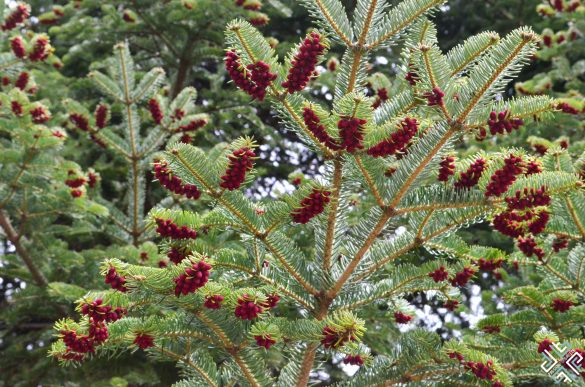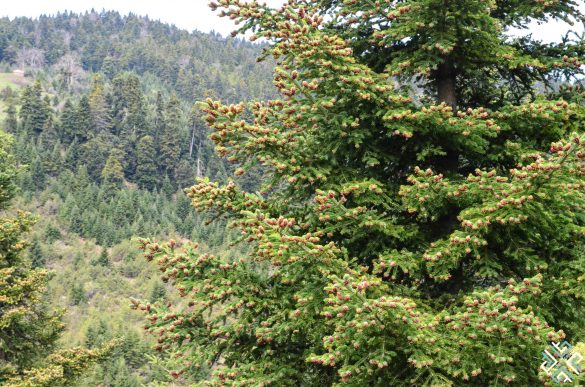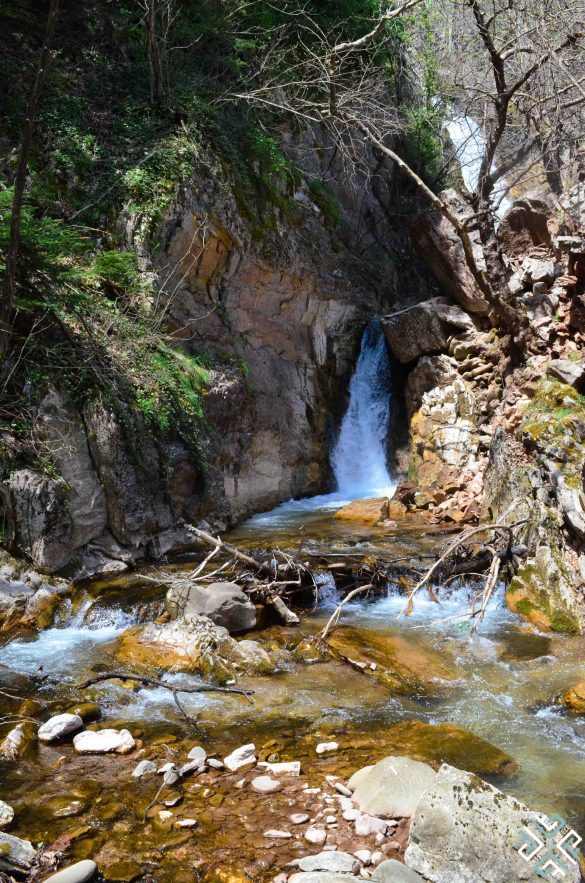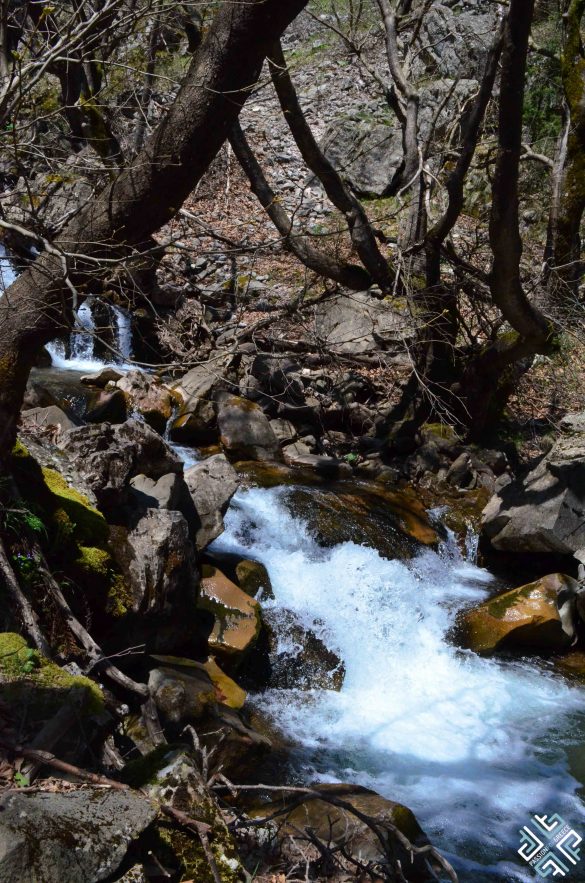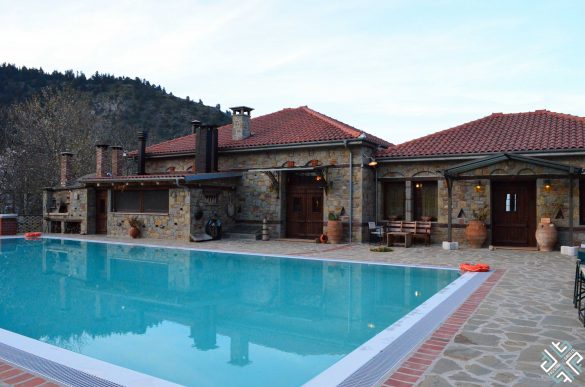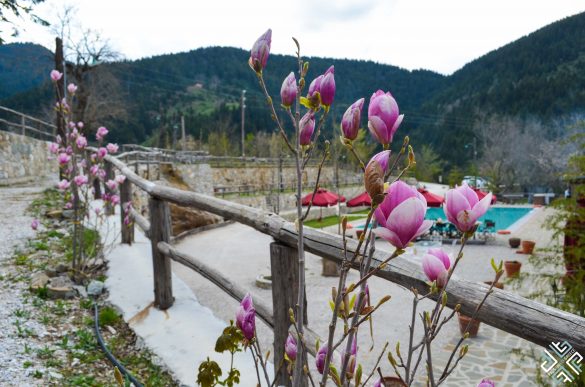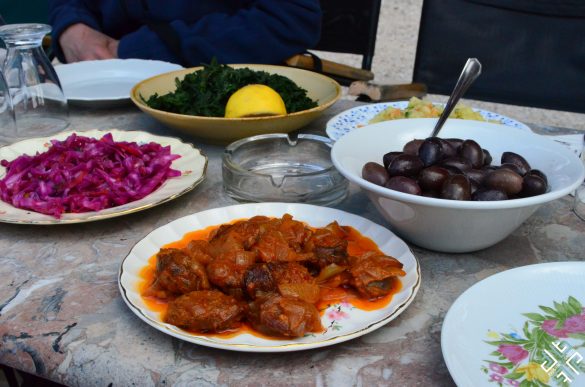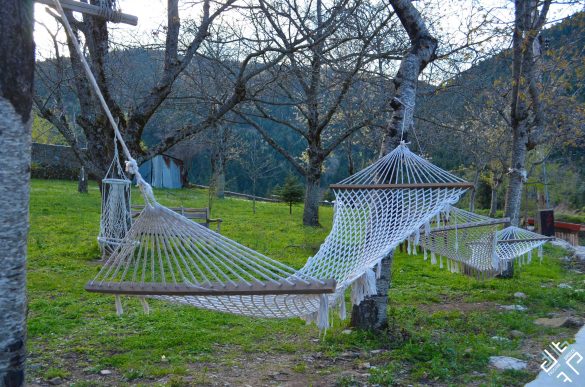On our first morning at Montanema Handmade Village we got to sleep in and waking up to the breathtaking view of the gorge was definitely refreshing. After enjoying the traditional local breakfast prepared with the freshest ingredients we were ready for our guided hiking tour in the Agrafa Mountains.
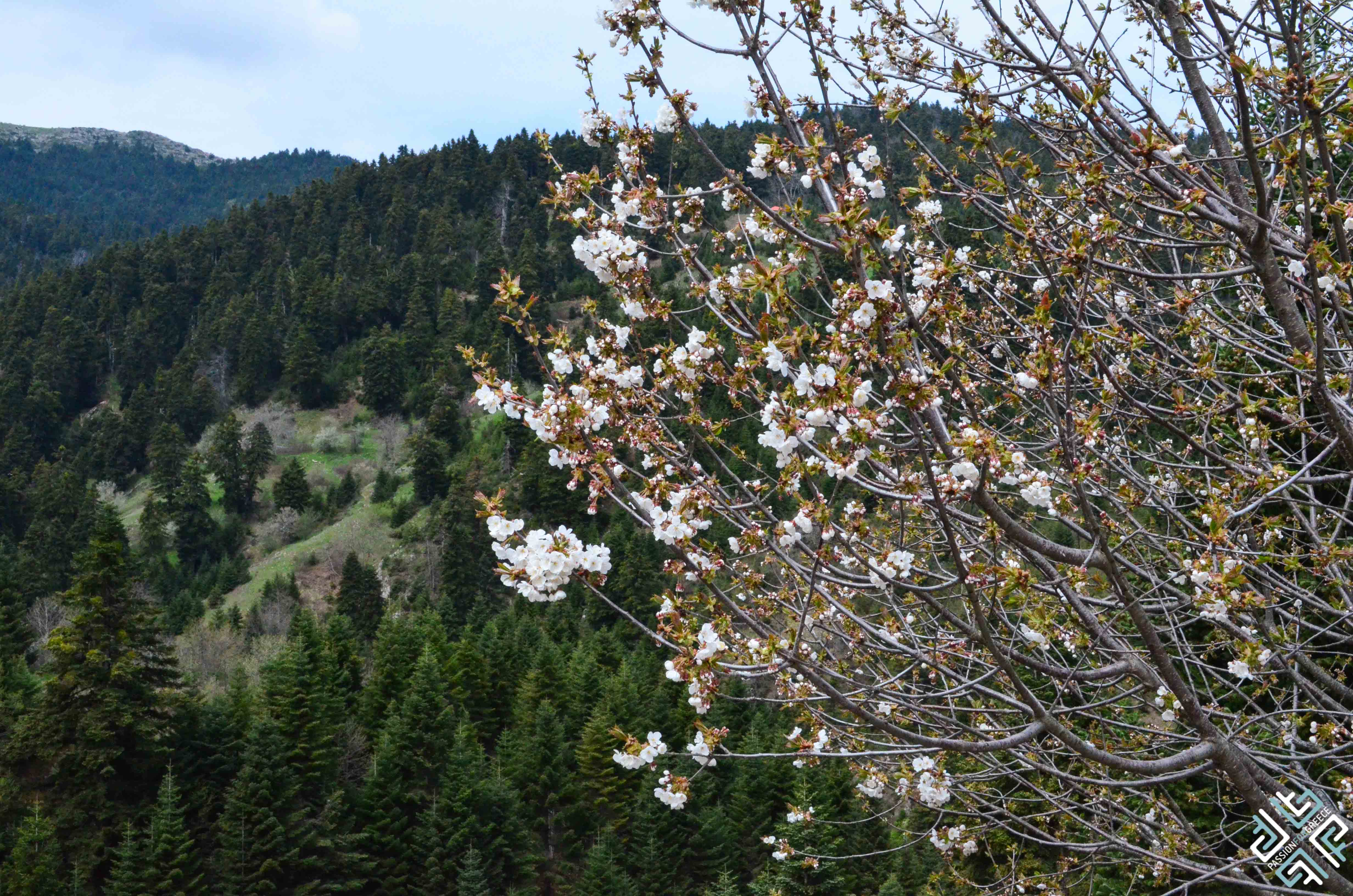
Our local guide Konstantinos who comes from the city of Karditsa gathered everyone outside by the pool of the resort and after a brief introduction we headed towards the slopes which lead to the famous waterfalls and watermill of Anthohori.
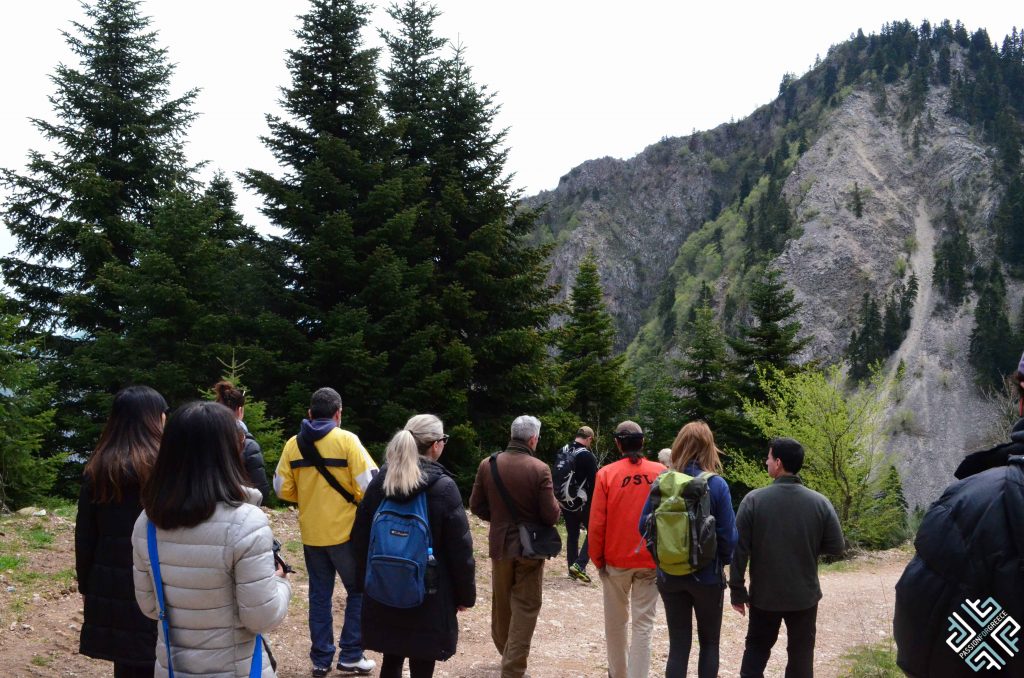
The Agrafa Mountains is the southernmost part of the Pindus range and is famous for its complete autonomy throughout the 400 years of Ottoman Turkish occupation of Greece. Here, people were not recorded in the Sultan’s tax register thus they were free to conduct their business and customs as they wished.
Agrafa Mountains have been nominated as one of the cleanest areas in the world, where the highest peak with an altitude of 2.184m, is Karava.
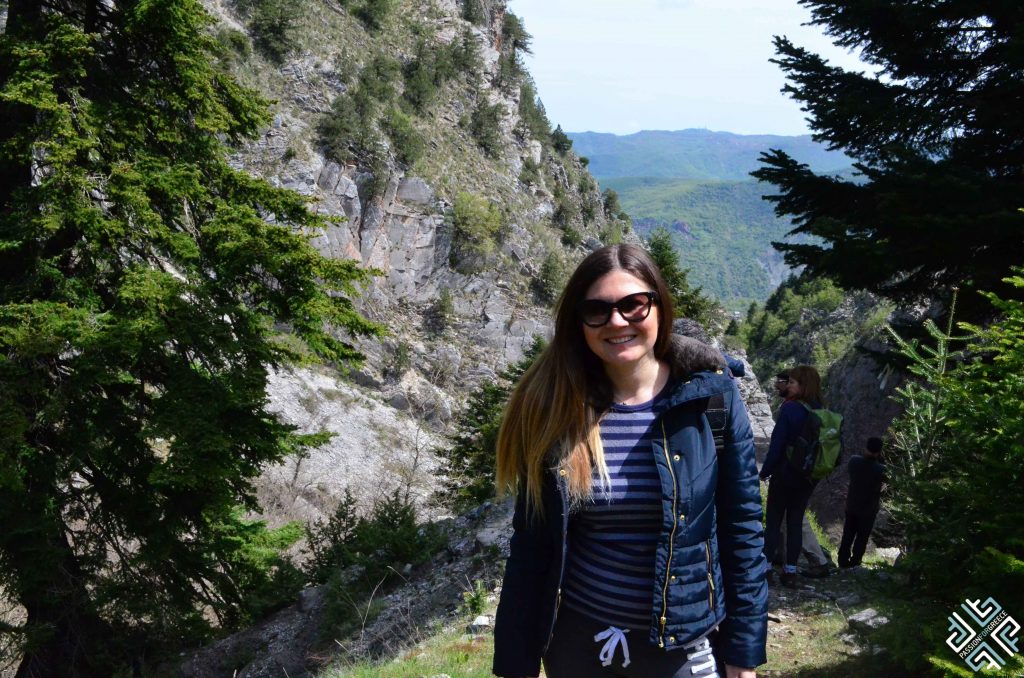
This place is considered a major attraction for all the hikers and climbers from all over Greece. Going down to the bridge and the famous watermill takes about 30 minutes if you keep on going without taking a number of stops along the way.
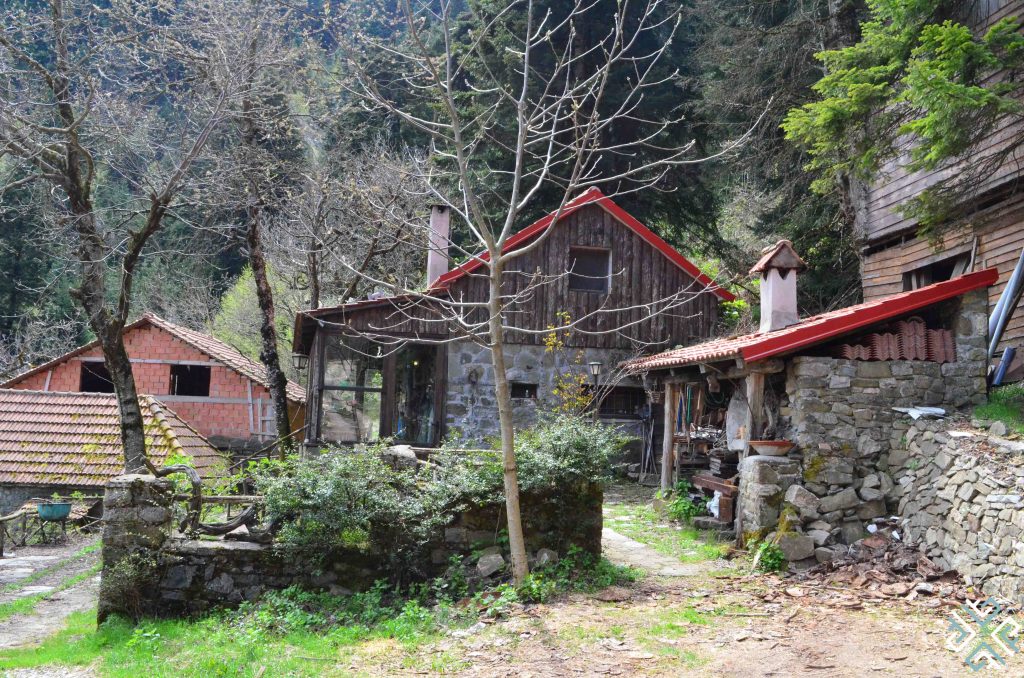 It took us around three hours to complete our tour as Konstantinos explained about the different types of flora and herbs growing in the Thessaly region. For example we came across a wild rose which in Latin is known as “rosa rubiginosa” and is a species of rose native to Europe and western Asia. In addition to its flowers it is also valued for its scent and apparently the tea made from the hips of this rose is considered a healthy way of getting a daily dose of Vitamin C and other nutrients. Apparently the area serves as a nature’s pharmacy with numerous species of herbs which are medicinal plants and are used for various treatments. According to Konstantinos, everyone can find the right herb for them in the area. We also came across the small-leaved Helleborine (Epipactis microphylla) which is a species of orchid that grows in the area.
It took us around three hours to complete our tour as Konstantinos explained about the different types of flora and herbs growing in the Thessaly region. For example we came across a wild rose which in Latin is known as “rosa rubiginosa” and is a species of rose native to Europe and western Asia. In addition to its flowers it is also valued for its scent and apparently the tea made from the hips of this rose is considered a healthy way of getting a daily dose of Vitamin C and other nutrients. Apparently the area serves as a nature’s pharmacy with numerous species of herbs which are medicinal plants and are used for various treatments. According to Konstantinos, everyone can find the right herb for them in the area. We also came across the small-leaved Helleborine (Epipactis microphylla) which is a species of orchid that grows in the area.
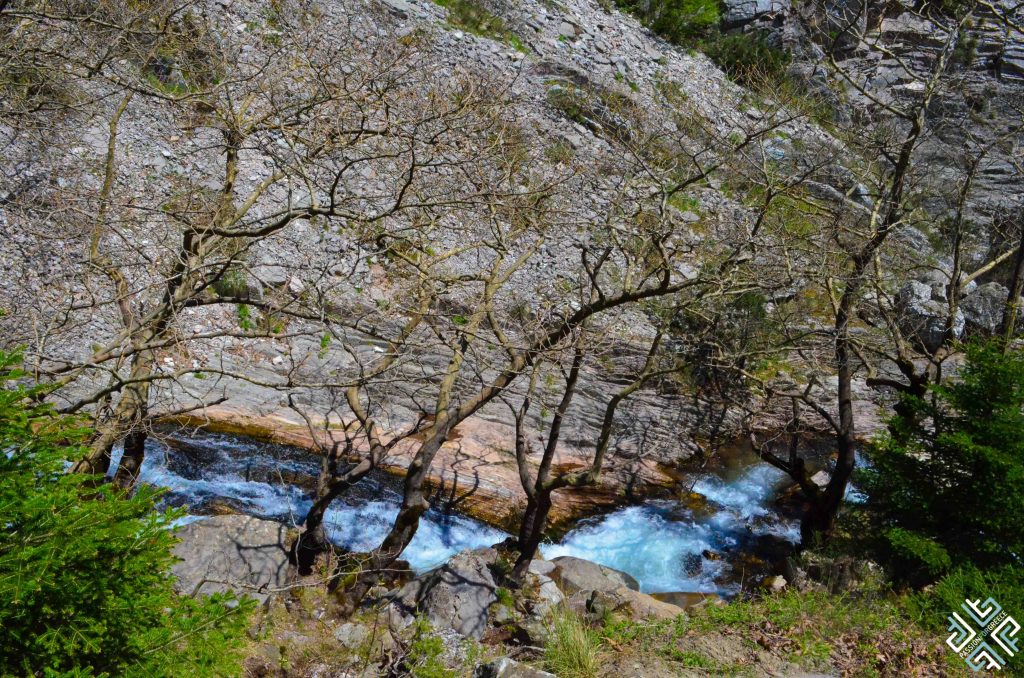
What we also learned during our hiking trip is the origin of Gin that comes from junipers (kedros) which vary in size and shape; they are evergreen with needle-like leaves. This specie is dioecious, what this means is that individual plants are either male or female, unlike most tree species, where both male and female flowers occur on the same tree. In this case the female trees are very distinctive with hard shelled seeds that become berry-like cones. At first these berries are green and ripen after 18 months to a dark, blue-purple colour.
These are the berries that are used to produce Gin. Konstantinos gave us to try a few berries and it is true, once you bite the berry you taste that bitterness that Gin produces. In Ancient Greece, juniper berries were used in many Olympic events as Greeks believed that the berries increased physical stamina in athletes.
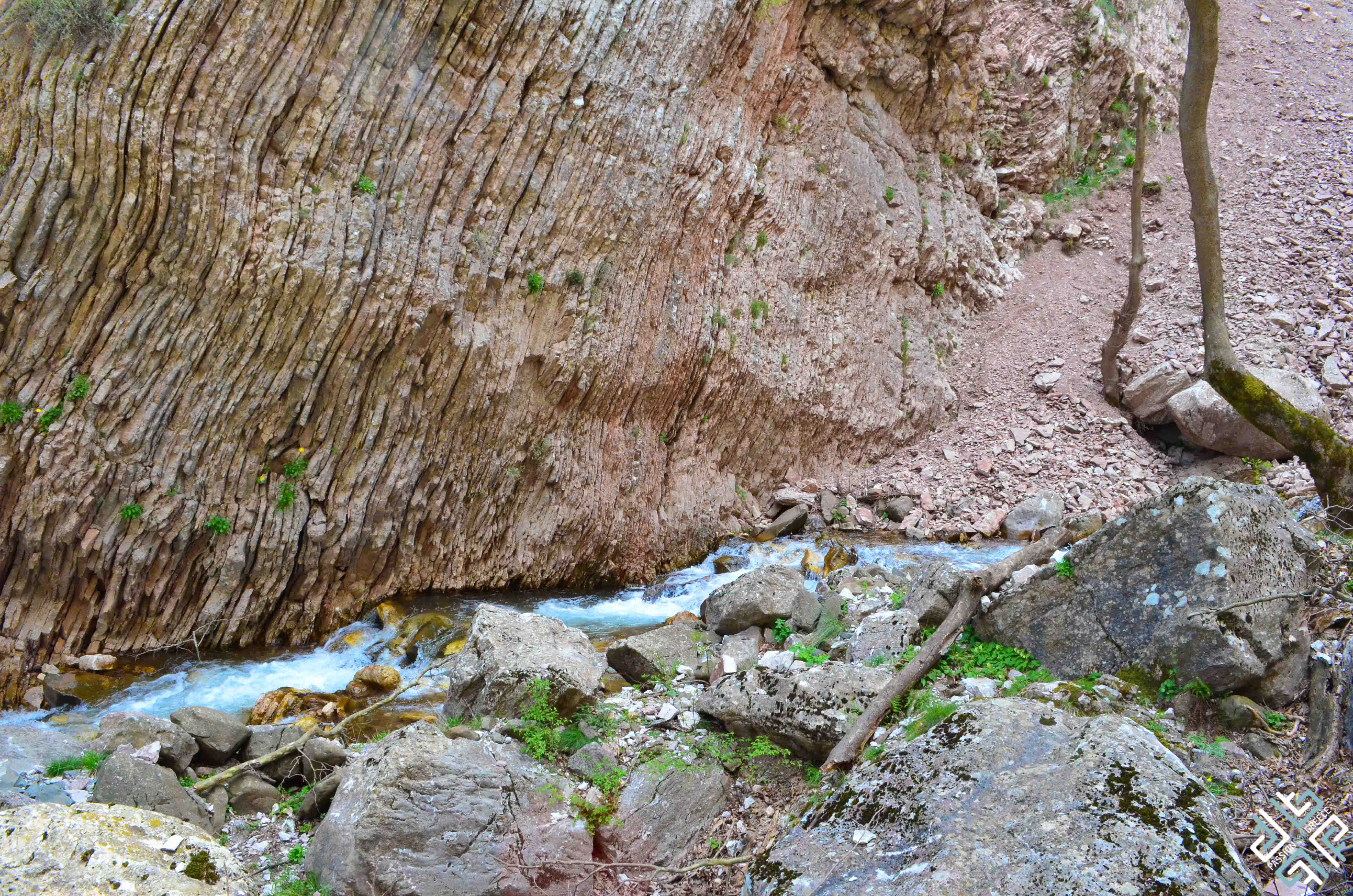
Depending on the season guests can also go mushroom picking however due to the weather conditions and a cold winter the mushrooms were not yet ready to come out. We did spot a few which were just at their early stages of growth, but generally mushrooms grow well at relative humidity levels of around 95-100%, and as Kostantinos explained there was not enough rainfall in the past few weeks in order to create the ideal circumstances.
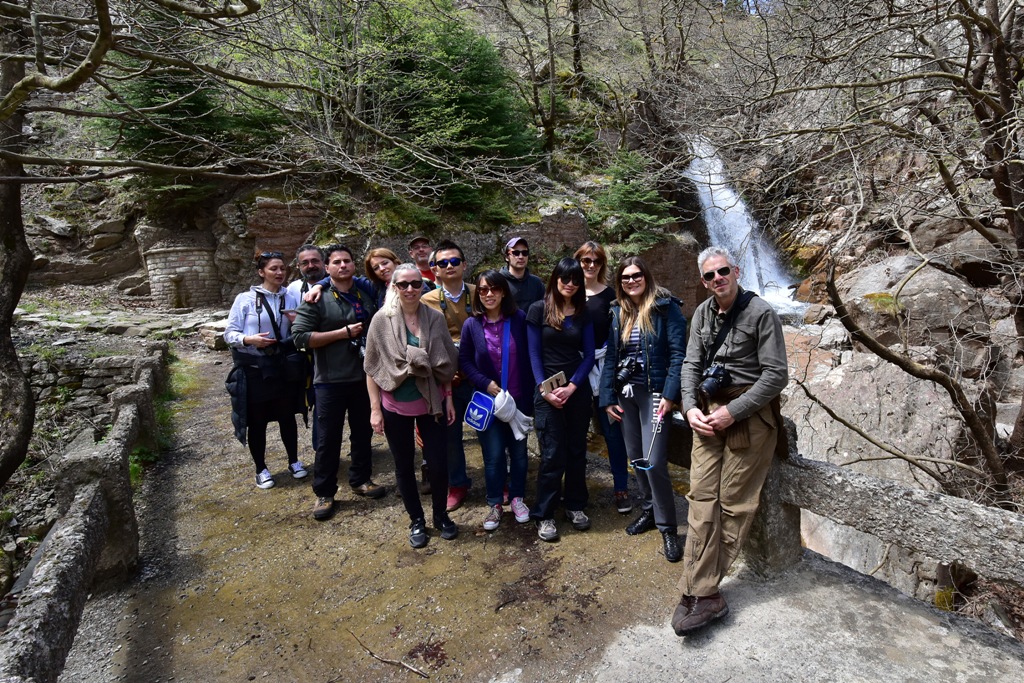
After our very educational hike and lots of fresh air, we were ready to return to our Montanema Handmade Village to enjoy a wonderful meze lunch served by the pool.
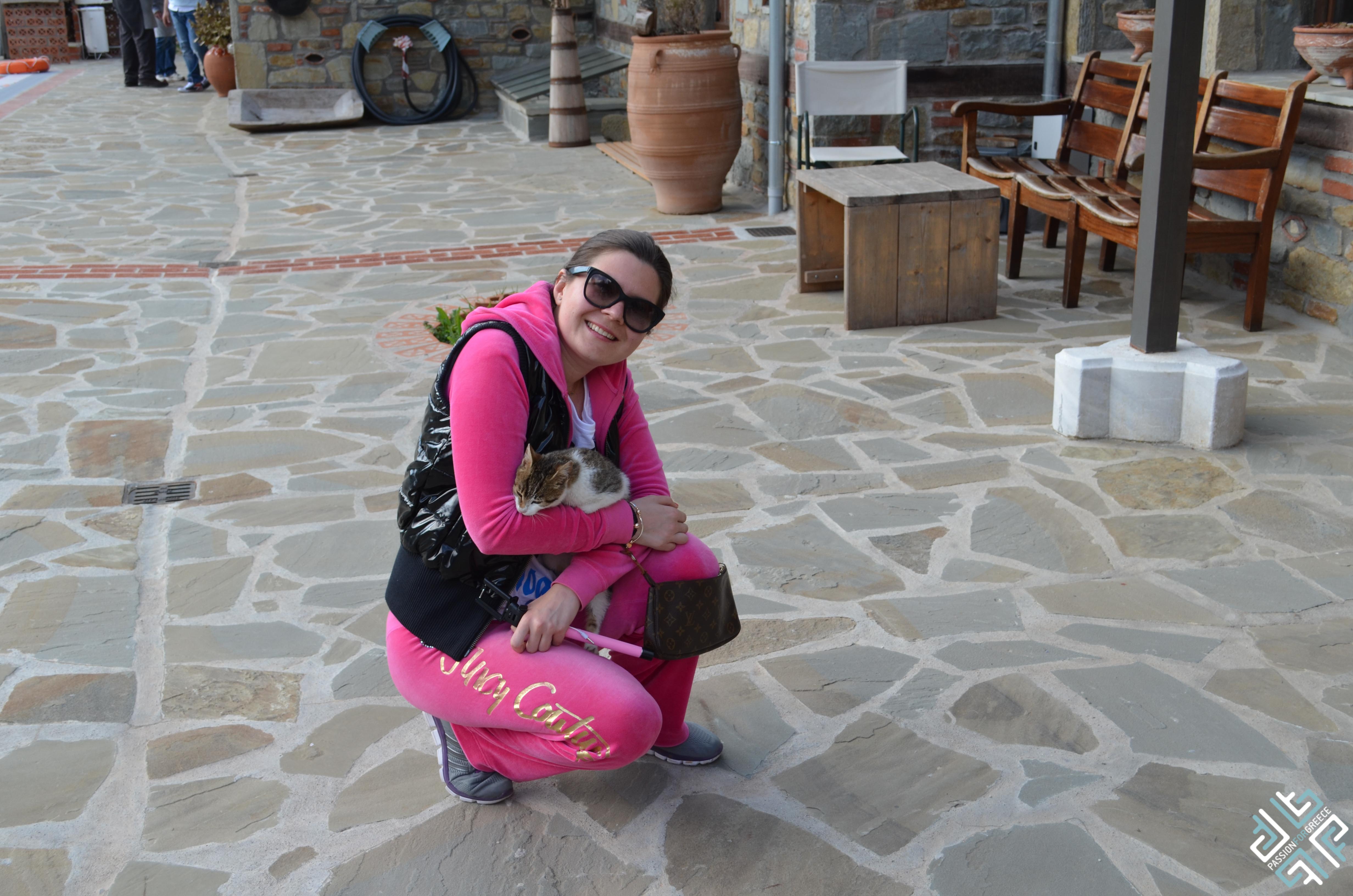
Making friends with the local cat
We tried all sorts of salads, meats, married feta dip (pandremeni feta) and of course the local double distilled tsipouro drink.
The afternoon continued with a tour of the resort, after which members of Travel Bloggers Greece attended an educational seminar organized by TBG member and photography blogger, Dimitrios Asithianakis, who taught the group on how to use their DSLR. In the evening we enjoyed another delicious dinner at the Fournia restaurant.
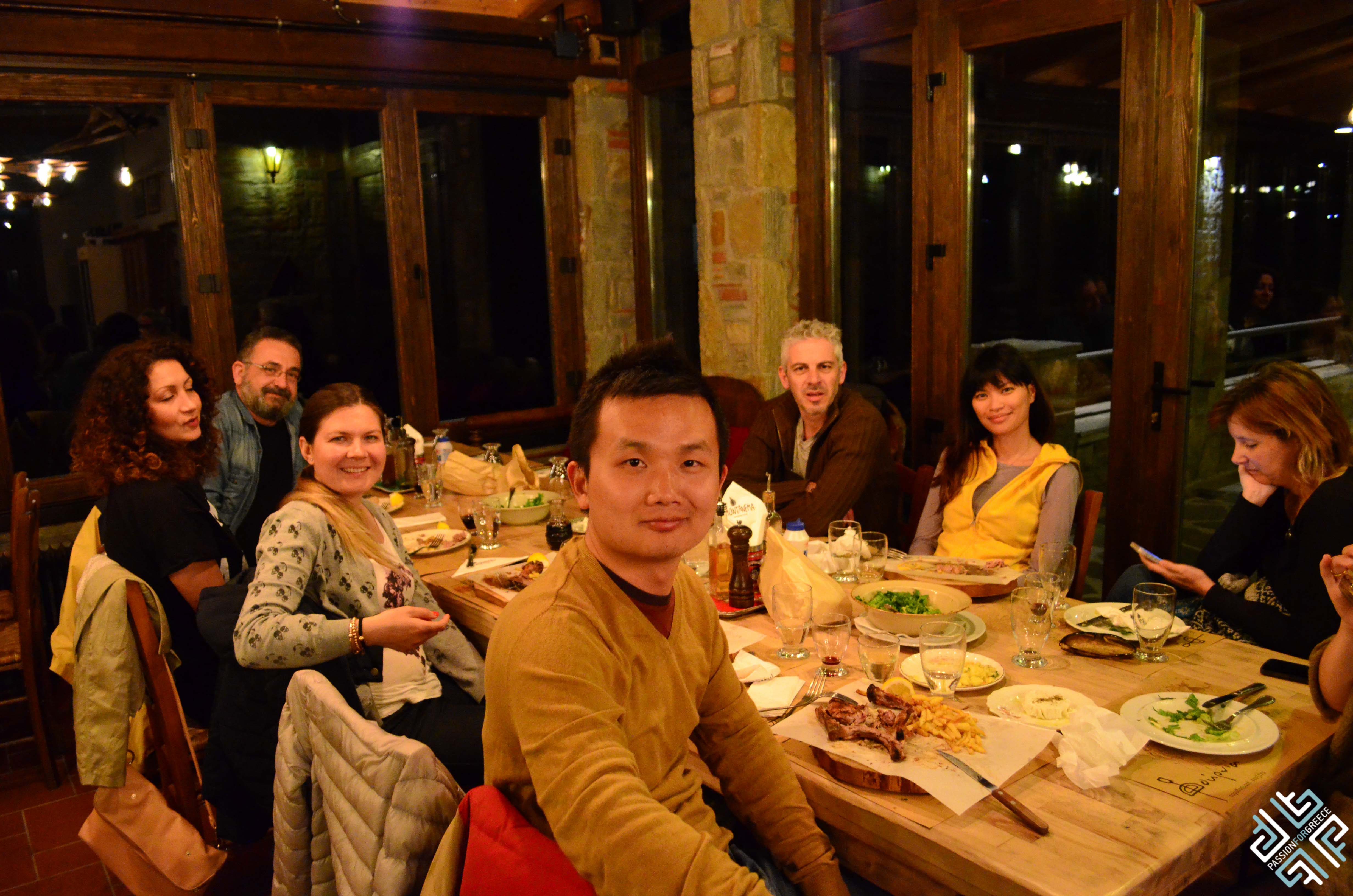
The post Hiking in Agrafa Mountains appeared first on Passion for Hospitality.

